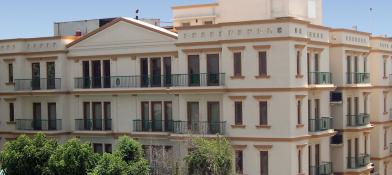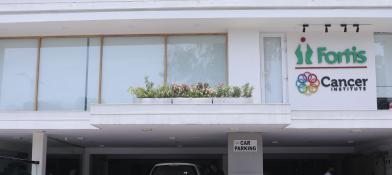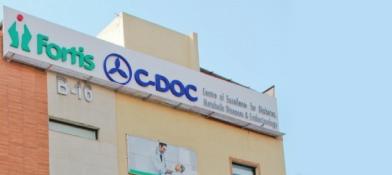Mastectomy
Overview
Mastectomy is a surgical procedure of removing breast tissues in high-risk individuals or those who have breast cancer. This is also called the breast removal surgery. It is a treatment done to prevent breast cancer. This surgery removes skin over the breast and nipple. Sometimes, it can remove the entire breast tissue but preserve the skin over the breast and nipple. After mastectomy, another surgery that restores the shape of the breast can be done; this is called breast reconstruction after mastectomy.
Indications of Mastectomy
Mastectomy is recommended for those to get rid of the breast cancer. This gives women a better chance of survival. This procedure is recommended in women who are not able to undergo radiation therapy as they have already undergone radiotherapy. This is also preferred for those who already had breast reconstruction surgery done as a part of removing the cancer but could not eliminate the cancer in total.
Mastectomy is a preferred surgery for those with two or more areas of cancer in different quadrants of the same breast that are not very close to each other. This can be done in women with tumours larger than 5 cm in size relative to the breast size. In women with BRCA gene mutation and who have an increased chance of second cancer, mastectomy is the preferred treatment choice. In pregnant women who must undergo radiotherapy after the removal of the tumour while still, they are pregnant, mastectomy is the preferred surgery.
Mastectomy is the preferred treatment in non-invasive breast cancers, early-stage breast cancer (stages 1 and 2), Paget's disease of the breast, and locally recurrent breast cancer. In particular, for breast cancers like locally advanced breast cancers and inflammatory breast cancers, mastectomy is the preferred treatment after chemotherapy.
Types of Mastectomies
Based on the surgical technique, mastectomies are of various types. They are simple or total mastectomy, Radical mastectomy, modified radical mastectomy, skin-sparring mastectomy, nipple-sparing mastectomy, and double mastectomy.
- Simple or total mastectomy: In this procedure, the entire breast, including the nipple, areola, tissue covering the primary chest muscle, and skin, are removed. Along with this, a few underarm lymph nodes may also be removed as part of a sentinel lymph node biopsy, depending on the involvement of the lymph nodes.
- Radical Mastectomy: This is an extensive surgery done which removes the entire breast, nipple, areola, underarm lymph nodes, and chest wall muscles under the breast. This is now rarely done.
- Modified Radical Mastectomy: This is like a simple mastectomy, along with the removal of lymph nodes of the arm.
- Skin-sparing mastectomy: In this procedure, the breast, nipple, and areola are removed, but the skin over the breast is retained. It is the most preferred method as there is less scarring and a more natural look of the reconstructed breast.
- Nipple-sparing mastectomy: Nipple-sparing mastectomy removes breast tissue, but the nipple and areola are spared. This is done in early-stage cancer, where the nipple and areola are not affected. This is a preferred surgery for small to medium-sized breasts.
- Double mastectomy: This is done in high-risk women with BRCA gene mutation as a risk-reducing or preventive procedure. This is done as a part of a breast cancer treatment plan.
Before the surgery
Before mastectomy, an individual must give complete details of the medical history, medications, or any previous surgeries. Few blood tests, urine tests, and imaging studies may be needed to understand the present physical condition of the individual. Diet will be restricted, and a list of medications to be stopped and to be used before the procedure will be given.
The surgery will be done on an empty stomach. Hence, it is necessary to refrain from eating anything 8-12 hours before surgery. It is always advisable to discuss with the healthcare professional on the breast reconstruction if an individual is willing to get that done. Breast reconstruction is done by using silicone implants, body tissue, or a combination of both. However, radiotherapy after mastectomy may make breast reconstruction difficult.
During the procedure
Mastectomy is done under general anaesthesia. Incisions or cuts are made around the breasts, and the breast tissue is removed; if lymph nodes must be removed, a radioactive tracer dye is injected to track the drainage of the lymph nodes. Based on the drainage, the lymph nodes (sentinel lymph nodes) and axillary lymph nodes may be removed.
Based on the extent of involvement, simple, radical modified radical, skin-sparring, nipple-sparing mastectomy, or double mastectomy are planned. Breast reconstruction can also be done at the same time as mastectomy. After the surgery, tubes are placed to drain the fluids, and sutures are done.
Recovery from Mastectomy
An individual is taken to a recovery room and kept under observation until the vitals are stabilized to see if there is any sign of infection. Medications that reduce pain and inflammation are given along with antibiotics to prevent infection. Instructions are given on the postoperative care and the review visits. One can return to their daily activities in about four weeks after mastectomy. Recovery time can be longer if mastectomy is associated with reconstructive surgery. Some women may need additional therapies like radiation, hormone, chemo, or targeted therapy after mastectomy.
Risks and complications
Some certain risks and complications are associated with the surgery, like bleeding, infection, pain, swelling in the underarm area, scarring, shoulder pain and stiffness, numbness in the arm and chest after the removal of the lymph nodes, and hematoma. The main complication that affects a woman psychologically is the way the shape of the breast changes after mastectomy.
Conclusion
Mastectomy is an essential surgical procedure aimed at removing breast tissue vital for the treatment of breast cancer. It is a preventive measure for high-risk individuals and a treatment option for those diagnosed with breast cancer. It offers hope and healing for those affected by breast cancer.






























